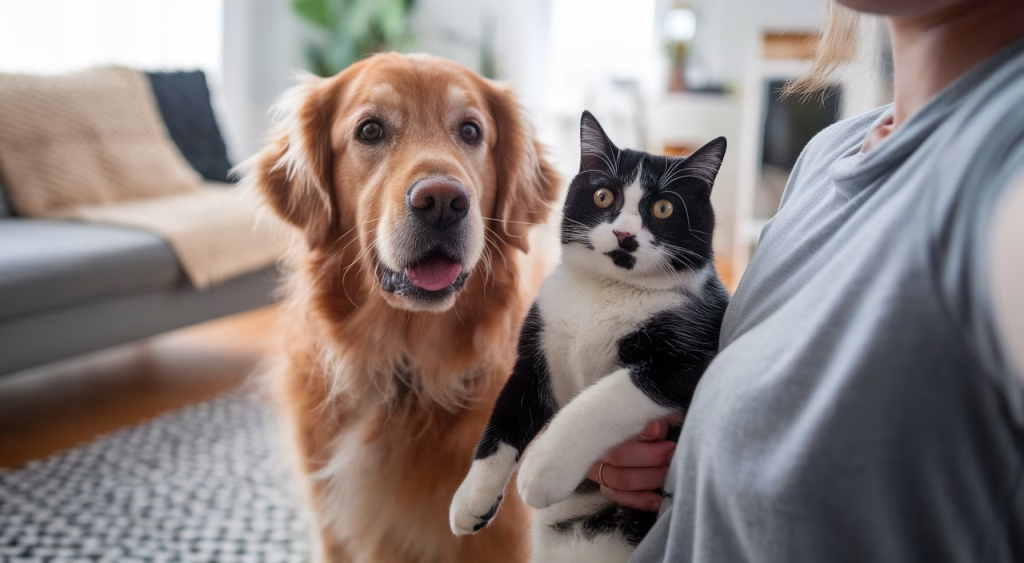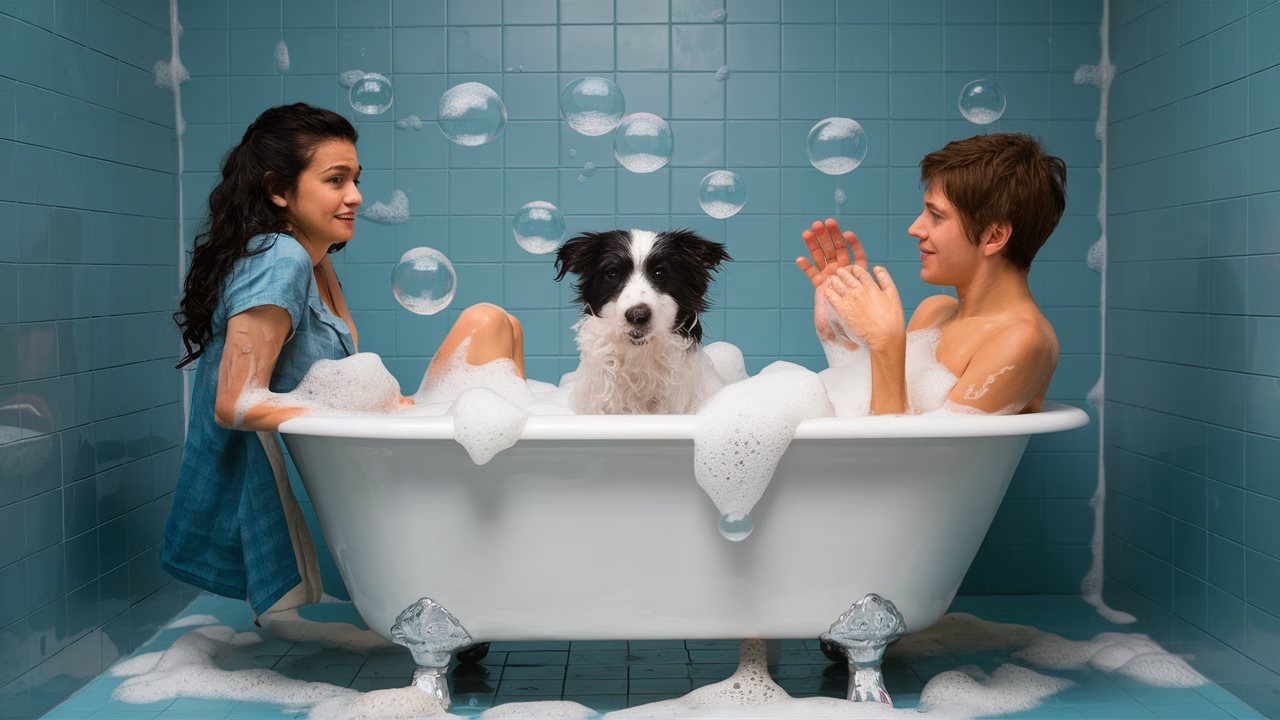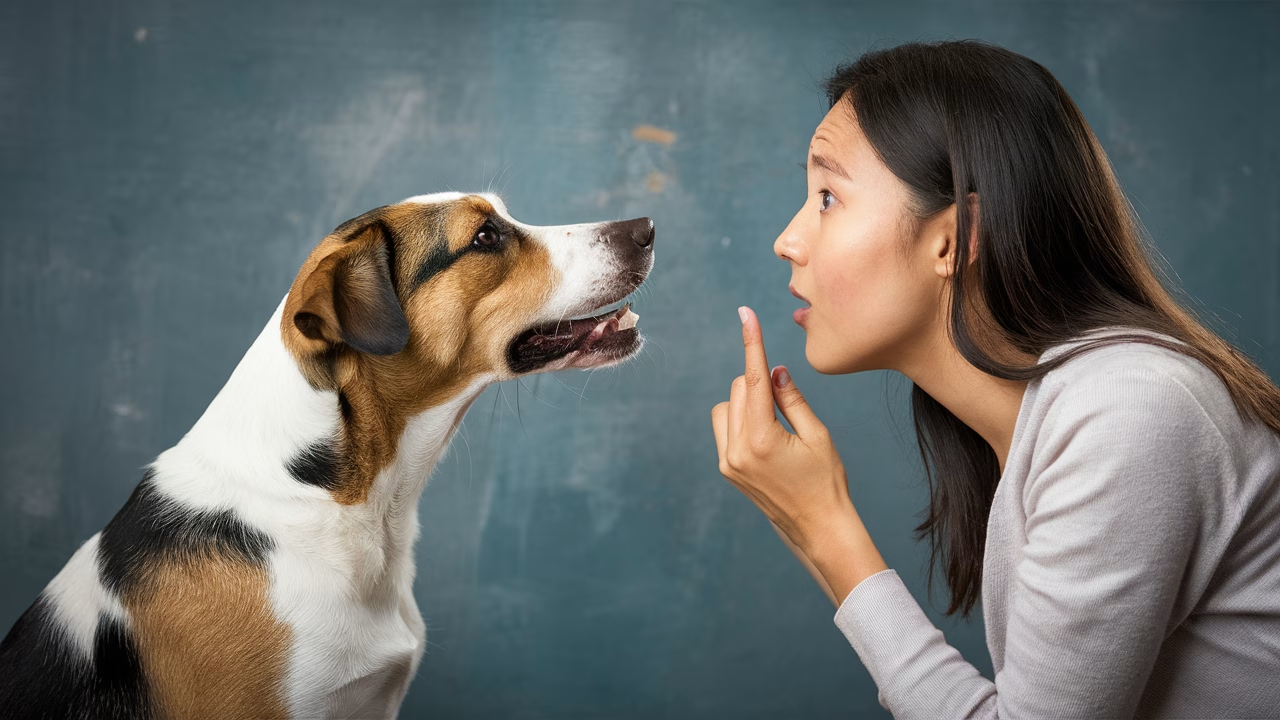Why does my pet always look so bewildered by my behavior?
Because you’re doing things that make no sense in the animal kingdom — and we’ve all been guilty of it. From vanishing daily without explanation to giving them toys that mimic prey but expecting gentle play, our furry friends are constantly decoding our confusing rituals.
- TL;DR:
- Pets lack context for common human behaviors — like going to work, taking selfies, or showering them in lavender-scented bubbles.
- The daily disappearing act leaves pets with abandonment issues and snack betrayal suspicions.
- Food puzzles, walk routines, and costume parties are peak human nonsense when viewed through a four-legged lens.
- Understanding their confusion builds empathy, enhances training, and strengthens your bond.
- Get ready to laugh and learn as we decode these hilarious animal kingdom mysteries at home.
How Pistol Shrimp Create Bubbles Hotter Than the Sun: The Ultimate Marine Heat Guide
The Daily Disappearing Act: Where Do You Go, Human?
If you’re a pet owner, you’ve probably seen that face — the pouty eyes, the tilted head, the hovering at the door every morning. You grab that mysterious rectangle (your phone), put on those strange foot sheaths (shoes), and disappear for hours. Welcome to the classic case of pet confusion: the daily disappearing act.
Your dog doesn’t understand commutes, deadlines, or why you smell like 12 different people by evening. To them, you’ve left the pack. In the animal kingdom, that’s a huge no-no unless you’re on a hunting mission. And your lunch break meetings? They’re wondering why you never brought back any snacks for the pack. Understanding your furry friend’s confusion about your daily routine helps explain why they act out or cling when you return.
The Battle of Bath Time: Why Are You Waterboarding Me?
Your dog was happily marinated in Eau de Garbage and a touch of Eau de Dead Squirrel when BAM — you hit them with a surprise bath and floral foam.
In the wild, rolling in odors is a survival strategy, a clever way to hide scent while stalking prey or confusing predators. When we wash away their signature musk, it’s the human equivalent of someone replacing your perfume with moldy cabbage juice. Cats, masters of self-grooming, find this bath practice an unforgivable betrayal — one that may be repaid through strategic furniture hairballs. This weird pet behavior stems from millions of years of evolutionary programming that we’re actively fighting with soap and bubbles.
Leash Logic: The Clumsy Waltz of Walk Time
“Why is my lightning-fast nose machine tethered to a slow-moving two-legger?” — every dog, probably.
Your dog has inherited millions of years of free-roaming evolution. But instead of exhilarating sprints, they now participate in the suburban slalom of tight leashes and sidewalk sermons. Why can’t they sniff that hydrant for two more seconds? Because you’re late, Susan. That’s why.
This bizarre dance between you and your pet — a combination of random stops, awkward tangles, and ignored detours — leaves even the most obedient pup scratching their head with a back leg in protest. Meanwhile, your cat watches this chaos from the window with an expression of aristocratic disdain and gratitude they don’t participate in such undignified rituals. Decoding animal kingdom mysteries at home starts with understanding that your pet’s walk preferences clash directly with human efficiency.
Food Puzzles: Fort Knox, But With Kibble
In nature, when an animal finds food, it eats. Immediately. No questions asked. But in your kitchen? We make our pets solve puzzles, flip contraptions, and unlock compartments like contestants on an episode of Canine Ninja Warrior.
Your dog probably thinks, “Great. Another trap. Why is this meal an IQ test?” And your cat? They’re wondering why they must bat a spinning fake fish to release a singular tuna-flavored morsel. They’re here for dinner, not dingbatery. This pet confusion around feeding time represents one of the biggest gaps between animal instinct and human logic — we’re literally making them work harder for something that should be immediate gratification.
| Pet Food Experience | Animal View | Human Logic |
|---|---|---|
| Instant hunting in wild | Find > Pounce > Eat | Natural instincts reward fast action |
| Puzzle feeders at home | Where’s the food? | Mental stimulation & digestion control |
Paparazzi Problems: Why That Device Steals My Soul
Pets don’t understand technology — especially the camera obsession. To your dog, your phone is a magical black rectangle that makes you squeal randomly while pointing it at their face. And those flashes? Very sus.
Pets often look confused in photos for a reason: they’re genuinely puzzled. Cats, with their deep ancestral suspicion, may think you’re casting digital spells. Dogs sit incredibly still only because you’ve offered 42 treats and a dramatic voiceover recital of their name — “Mr. Barkenschnauzer Wiggle Bottom, look at mommy!” This weird pet behavior around cameras shows how modern technology creates entirely new forms of pet confusion that their ancestors never had to navigate.
The Baby Talk Shift: Perfect English… Then Gibberish
Ever heard yourself say, “Whooo’s a gooood boooyyyy? You is! YESH YOUOOO ARE!” and wondered when you lost the ability to adult?
Your dog does. While they love hearing their name, the tonal acrobatics of your voice is baffling. To a dog trained in basic commands, this baby talk is a linguistic curveball that conflicts with their learned human communication patterns. Cats? They tilt their head slightly, catalog your gibberish in their brain’s “neurotic primate behavior” folder, and prepare to ignore you with elevated enthusiasm. Understanding your furry friend’s confusion around inconsistent communication helps explain why training sometimes feels like an uphill battle.
Furniture Rules: Mine? Yours? Wait, What?
You buy a plush, sunny couch only to guard it like Fort Knox whenever your pet dares approach. In the wild, comfy spots are taken first-come, first-keep — no reservations required.
Your pet doesn’t understand the concept of ‘Mom’s favorite spot’ or ‘Not when you’re muddy.’ From their view, furniture rules fluctuate based on mysterious and unknowable human emotions. Like, why is the bed okay at midnight but not at 2 p.m. on cleaning day? Training becomes ten times harder when the rules seem arbitrarily governed by invisible moons or visitors in fancy shoes. This daily pet confusion around territory and boundaries represents one of the most common sources of behavioral issues in households.
Dress-Up Games: Fido the Fairy?
Millions of years spent developing fur coats suited for survival — and now, your dog is a cowboy with a pink hat. From a dog’s evolutionary standpoint, these fashion choices ruin aerodynamics, hunting stealth, and dignity.
Cats, naturally loathed to be compromised, will remember your betrayal on Halloween until your grandchildren are born. They associate the costume attempt with a low-level personal vendetta and plan accordingly. This weird pet behavior around clothing stems from their inability to understand human concepts of “cute” versus practical survival gear.
Toys That Squeak Then Die Violently
Ever been mad your dog destroyed that $30 plush bunny in 12.6 seconds? You handed them what sounds exactly like a prey animal in mortal peril, then recoiled at their totally instinctual response.
Dogs are hardwired to attack squeaking prey aggressively, silence the noise, and declare victory. Cats see a feather wand and enter predator-mode. When you scream “Not my couch!” they hear “Kill harder!” You’re dealing with ancient instinct, not an ungrateful chew artist or couch vandal. Decoding animal kingdom mysteries at home means recognizing that we’re literally triggering their hunting software then getting upset when it runs perfectly.
Why Do They Give Me Dead Animals?
Your pet doesn’t think they’re grossing you out — they think they’re feeding you. A freshly caught mouse or pigeon is a top-notch gift in their world. Your scream? Offensively ungrateful.
In pack behavior, shared food means shared survival. Bringing you prey signals solidarity. And when you panic at the midnight unveiling of a cricket in your slipper, your pet is wondering if you’re fit to be part of the pack at all. It’s not rebellion, it’s love — albeit messy, chirpy love. Understanding your furry friend’s confusion around gift-giving helps explain why outdoor cats keep delivering “presents” despite your horror.
Comparing Human Logic vs. Animal Instincts
| Scenario | Pet Instinct | Human Behavior |
|---|---|---|
| Bath Time | Preserve natural scent | Smell like flowers |
| Selfies | Threat, flash = danger | Record memories |
| Walks | Wander & sniff freely | Walk in straight lines |
| Costumes | Self-regulate body temp | Look cute |
| Furniture | Firstcome = owner | Human spaces vs. pet spaces |
FAQs
How can I help my pet feel less confused?
Predictable routines, consistent training, and offering choices help pets feel more secure in human environments.
Do pets really feel abandoned when we go to work?
Not exactly abandoned — but some pets experience separation anxiety because they lack context for daily routines. Enrichment and slowly building independence can help.
Why does my dog destroy every toy?
Squeaky, fluffy toys tap into hunting instincts. Destruction isn’t disobedience — it’s evolutionary programming in action.
Why do cats act offended by costumes?
Cats enjoy control and independence. Most costumes feel restrictive, unnatural, and affect their movement — which feels threatening to them.
Why do pets hate being photographed?
The flashing light, unfamiliar device, and unpredictable behavior from us during pictures can make them anxious or wary.
Is baby talk confusing for pets?
Yes — it disrupts language patterns and tones they may be trained to associate with commands. Clear, calm tones work best.
How can I better communicate with confused pets?
Use body language consistently, reinforce desired behaviors gently, and learn their instincts. Understanding is the bridge between species.





